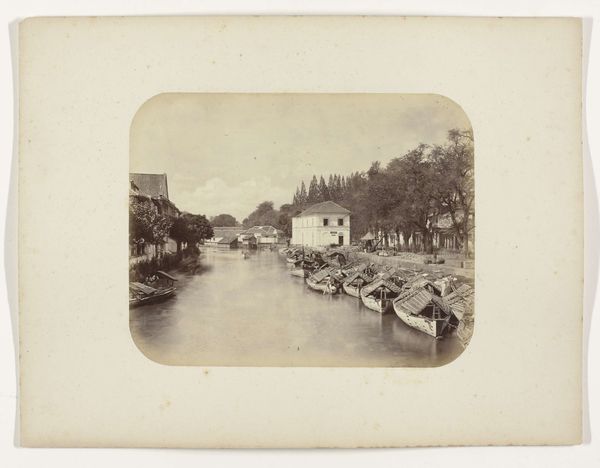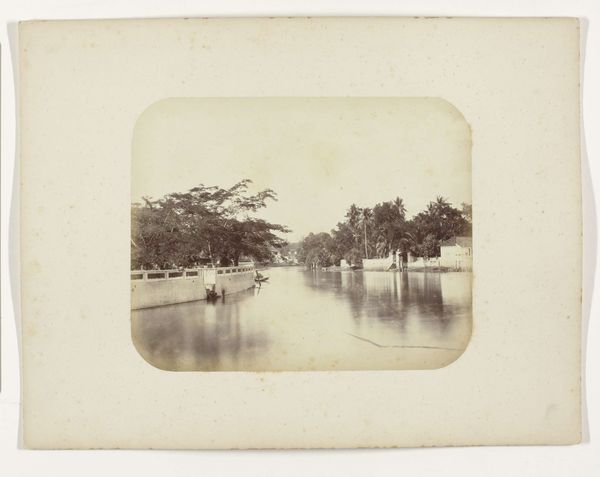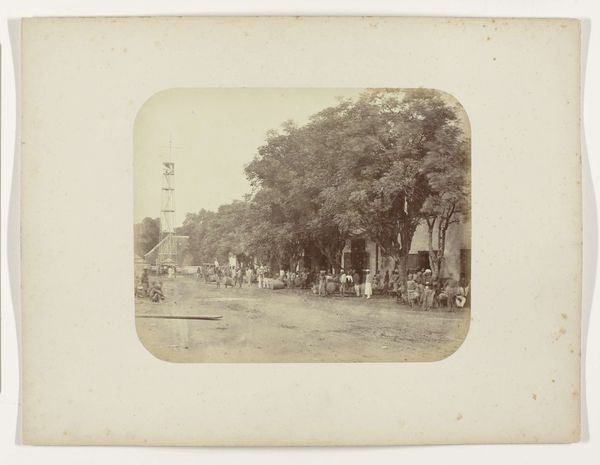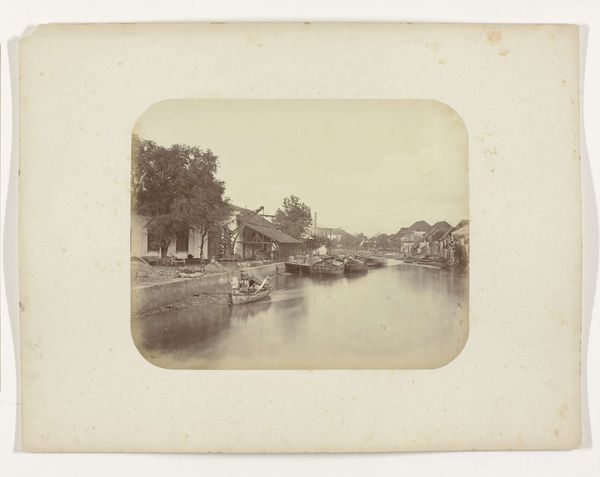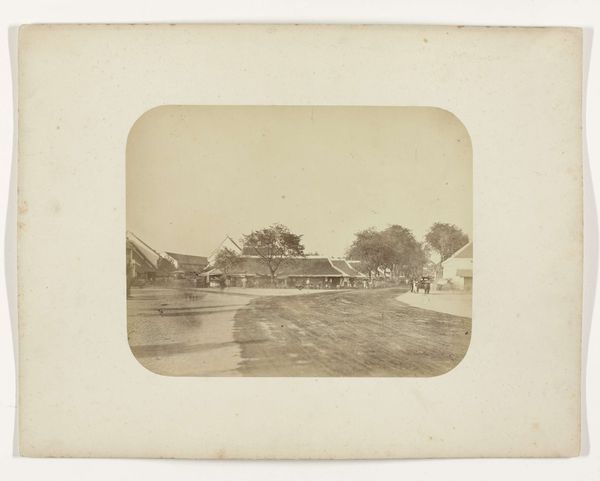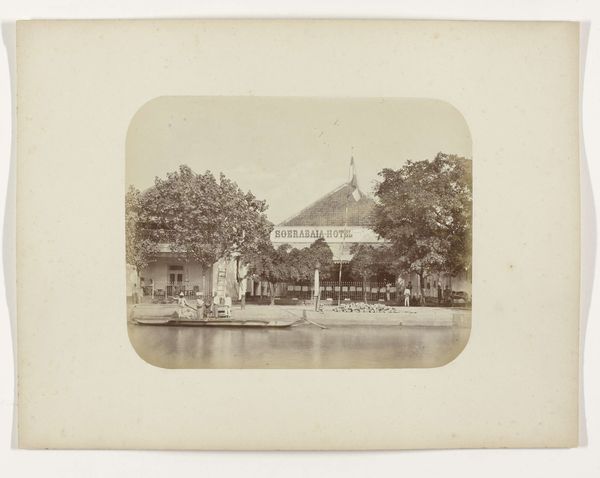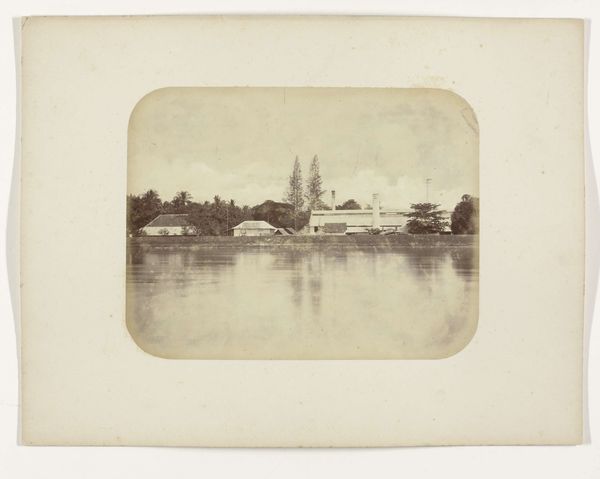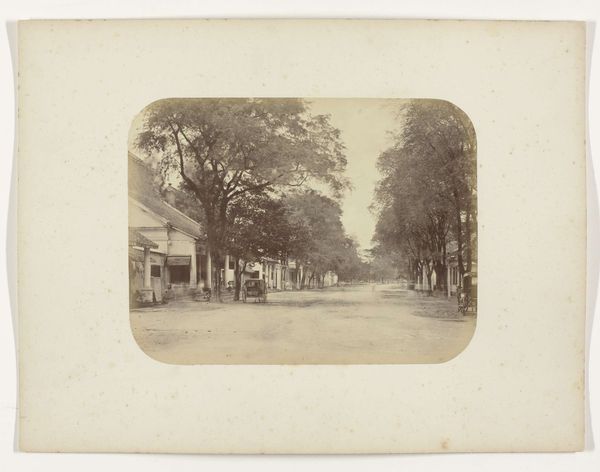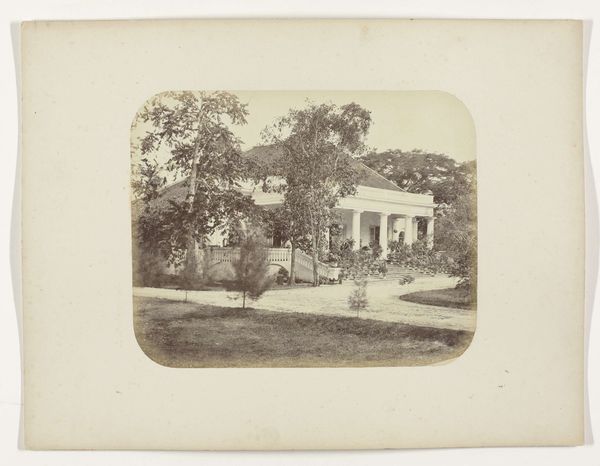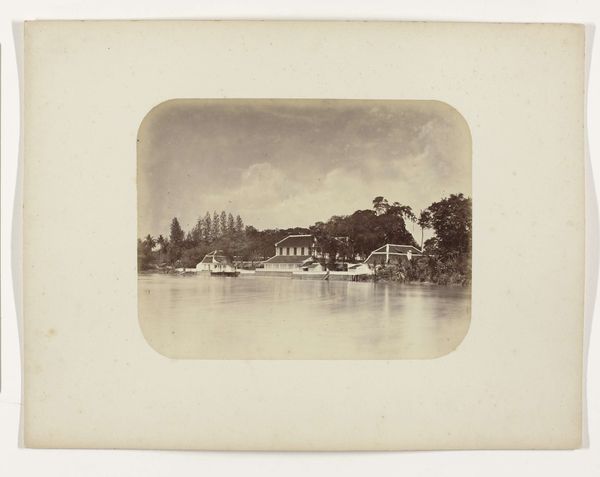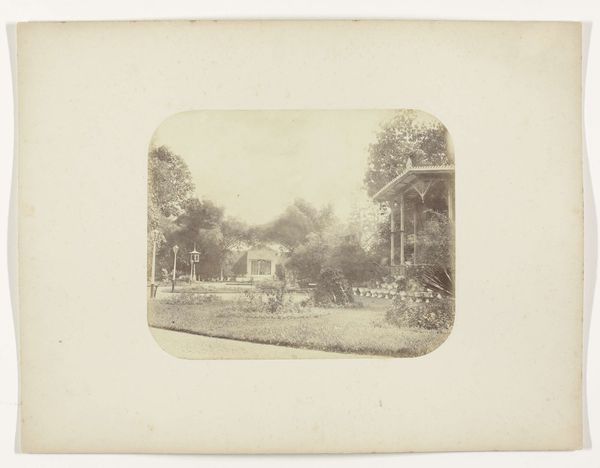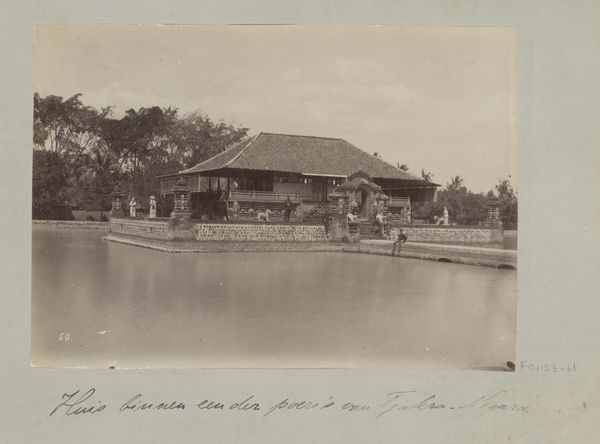
photography, albumen-print
#
aged paper
#
toned paper
#
landscape
#
photography
#
coloured pencil
#
orientalism
#
cityscape
#
natural palette
#
albumen-print
Dimensions: height 22 cm, width 27.8 cm
Copyright: Rijks Museum: Open Domain
Curator: It's remarkable to see this albumen print, titled "Het handelscentrum van Surabaya," or "The Trading Center of Surabaya," captured between 1876 and 1884 by Herman Salzwedel. It resides here at the Rijksmuseum. Editor: Immediately striking is the hazy stillness. The light, reflecting off the water, makes it hard to discern any clear horizon line. It's incredibly atmospheric. Curator: What’s interesting is Salzwedel’s approach. This isn't a purely objective document; the use of the albumen process with coloured pencil to embellish the image invites questions about authenticity and the construction of the colonial gaze. It certainly adheres to the Orientalist style. Editor: I see the image through a lens of social and political dynamics. The photo captures the commercial heart of Surabaya during Dutch colonial rule. It portrays a staged image intended for the western market and colonial authorities alike, glorifying commerce under their domain. It subtly tells of power structures inherent at that time. Curator: Precisely! The materials themselves – the albumen print, often touched up with colour – speak to the laborious process involved in producing and consuming these images. Consider the skill and labor embedded in each print, intended for distribution among a select, privileged group, serving to exoticise Indonesia. Editor: Indeed, how was this image displayed? Did the Western viewer interpret the reality and challenges of this scene as presented in this work? Such early photography helped construct a narrative of dominance that directly influenced policies and opinions toward the region. Curator: It all circles back to the colonial enterprise, using photography as a tool of observation, categorisation, and control. What initially seems like a quiet scene reveals layers of complex interaction and subjugation through commerce. Editor: Ultimately, pieces like Salzwedel's prompt reflection on colonialism’s far-reaching effects—cultural, economic, and visual. A simple-looking photograph then has significant stories woven into its production and consumption.
Comments
No comments
Be the first to comment and join the conversation on the ultimate creative platform.
